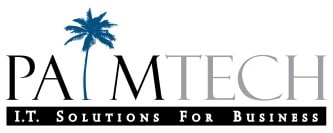Carrying a four-leaf clover might work for leprechauns. But when it comes to Internet abuse by employees, you’re gonna need more than sheer luck…
Did you know that…
- 70% of all web traffic to Internet pornography sites occurs during the work hours of 9 a.m. – 5 p.m.
- Non-work-related Internet surfing results in up to a 40% loss in productivity each year at American businesses.
- According to a survey by International Data Corp (IDC), 30% to 40% of Internet access is spent on non-work-related browsing, and a staggering 60% of all online purchases are made during working hours.
The list goes on, and the costs to your company can be staggering.
What types of web sites present the greatest risk? Categories include abortion, alcohol, dating, death/gore, drugs, gambling, lingerie/swimsuits, mature, nudity, pornography, profanity, proxy, suicide, tobacco and weapons.
Risks these types of web sites expose your business to include malware, viruses, fraud, violence, lawsuits, loss of confidential and/or proprietary data and more. Even social sites, while perhaps not quite as risky, can have a major impact on productivity.
Barriers that once stood at the edges of your office network have been annihilated by digital media.
Web content filtering is now crucial to network security – not to mention employee productivity – in this emerging environment. It can be deployed in a number of ways, but basically they boil down to two: inline and endpoint filtering.
Inline Web Filtering One way to filter web content is to control it at the entry point or gateway to your network. This technique intercepts all web traffic and applies filters that allow or block web access requests. Because the entire network is filtered, no access to the user’s device is required. With inline web filtering, there’s no need to expend resources managing content at each endpoint – your employees and their computers, whether desktop or mobile. Inline filtering not only saves bandwidth, it goes a long way toward mitigating cyberthreats. For securing activities that take place within your network, it’s a critical and potent strategy.
Yet, with the shift away from traditional office-bound work routines to a work-from-anywhere culture, the effectiveness of inline filtering has diminished. When employees access the web outside your network’s gateways – via home networks, hotels, coffee shops, etc. – their devices become vulnerable to attack.
And any employee can carry an infected machine into and out of your company’s building and network on any given day, exposing your entire intranet to infections. And that’s why so many companies are moving to endpoint-based web filtering to complement their inline filtering.
Endpoint-Based Web Filtering
Endpoint-based filtering protects employee devices from infections, no matter where they connect to the web. Software at the endpoint – your employee’s device – carries a predefined filtering policy from the central server that can be intranet-based or cloud-based.
The endpoint filter is then updated periodically from your company network. This method assures that web filtering is always active, no matter which gateway the machine connects through. The downside is that it must be rolled out and maintained at all endpoints.
That being said, one advantage of endpoint-based filtering is that it addresses stringent employee privacy regulations that are quickly becoming the norm in Europe and elsewhere around the world. Because it keeps browsing-pattern information within the user’s device, endpoint-based filtering provides a fairly non-intrusive way to handle employee privacy concerns.
And finally, while endpoint-based filtering really is the only way to protect a network without boundaries, as most companies now have, ideally it works hand in glove with inline filtering.
Forget the Charms – You Can Bet On This
We highly recommend rolling out not only inline and endpoint filtering, but also an effective training program for your staff to encourage best practices and assure compliance with your company’s web security policies and procedures.
Want to make sure all gaps are sealed and you won’t have to count on a four-leaf clover, a rabbit’s foot or knocking on wood to keep your network secure? Contact us today at (561) 969-1616 or [email protected] for a customized Web Content Filtering Review and Analytical Report on your system.
